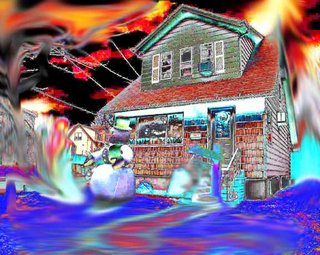
Some Realty Realities courtesy Bryant Nielson,
of 1st Metropolitan Mortgage in Tenafly:
Delinquencies peak the third and fourth years of mortgages.
It is reported that although borrowers are often told that the first year is the hardest, delinquencies have historically reached their highest points during the third and fourth years of mortgages.
There are a few forces at play: After years of strained budgets, borrowers may have little in savings to draw on to handle a crisis; this is also the period when major repairs begin to crop up; finally, many home buyers go through life changes, including starting a family.
The number of Americans affected by the coming danger years could be huge. It is further reported that half of all mortgage loans are three years old or less. Nearly $3 trillion in mortgages originated in 2002, $4 trillion in 2003 and $3 trillion again in 2004. Many were refis, but there were also record totals of new purchases as well.
In addition, many of these transactions involved risky loans, such as interest-only ARMs and no-down payment loans.
A recent report found that the median new home buyer put down just 2 percent in 2005. Forty-three percent put down no money at all. And according to SMR Research, some 25 percent of loans were interest-only, do nothing to reduce the debt on the house.
Lenders used to offer interest-only loans to only the best credit-quality prospects and that is no longer true.
Adjustable rate loans accounted for nearly half, by dollar volume, of loans issued in 2004 and 2005. Because interest rates have risen and are expected to increase further, those loans will adjust upward and monthly payments will be higher.
With a $200,000 loan adjusting upward from 4 percent to 6 percent, the monthly bill would increase to about $1,200 from $955.
Yet most homeowners are safe. 35 percent of all homeowners carry no mortgages at all and another 50 percent have traditional fixed-rate loans, which leaves only 15 percent of all homeowners at risk.
It I also pointed out that some who have opted for nontraditional mortgages are affluent and choose these products to free up cash for more lucrative investments. The risk to these financially savvy individuals is low; most can pay off their mortgages any time.
Furthermore, those who bought a few years ago when real estate was hot, may already be in safe territory, as the value of their homes has grown enough that they now have enough equity to ride out financial storms.
But even if the percentages of borrowers who may go into default remains modest, even an increase of a few percentage points can add up to millions of households.
Big price gains are ending
And housing seems to be headed, if not into a decline, at least into a period of much more stable, slower growth. The median home is predicted to inch up by only a few percent in 2006, according to NAR. In many markets, prices may fall. Home buyers cannot count on increasing home equity to bail them out of tight situations.
Nice colors. Keep up the good work. thnx!
ReplyDelete»